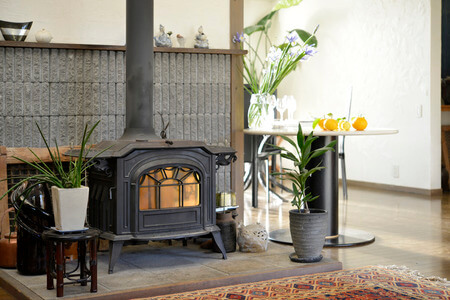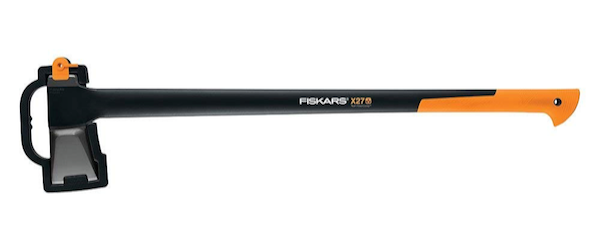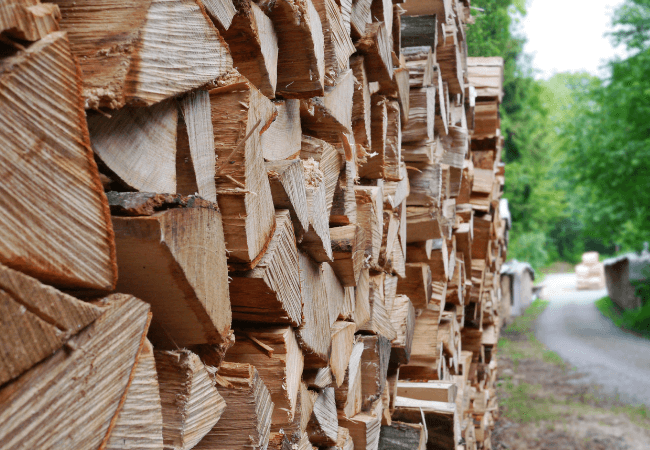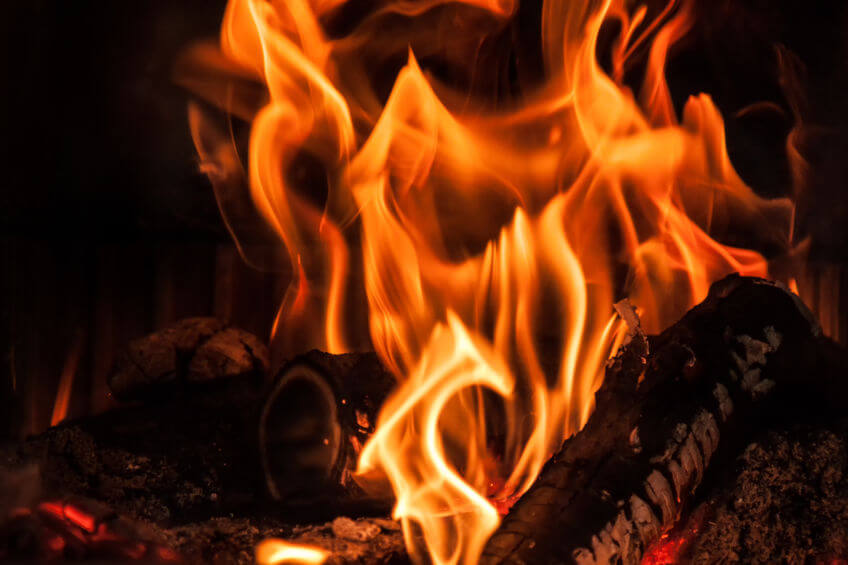- Home
- Firewood Types
- Spruce Firewood
Spruce Firewood
This post may contain affiliate links so I earn a commission.
Although it’s not the most popular firewood choice, spruce firewood is something to consider if you have a fireplace or wood stove.
There are several species of spruce in North America however, there is very little difference between each when it comes to burning them as firewood.
Spruce presents some benefits and disadvantages as a firewood selection - here’s what you need to know.
Can You Use Spruce As Firewood?
Spruce might not be the most popular when it comes to firewood, but that’s not to say that you can’t use it in your fireplace or wood stove.
It is a low-density softwood that has a tendency to produce lots of creosote inside of your chimney.
However, when allowed to season and age properly, it shouldn't present any major problems - at least, not any more so than other kinds of softwoods used as firewood.
Spruce firewood is relatively easy to split and burns quickly. It has a relatively low BTU but, since spruce is readily available, it’s not a bad choice when it comes to looking for wood to burn.

If you’re thinking about burning spruce firewood, you may want to wait until the spring or fall to do so.
Both make heat control easier, since they don’t burn quite as hot as other firewood species (like oak and beech) and will therefore, be less likely to overheat your house.
Mixing spruce in with other firewood types also works well to help control the heat in the shoulder months before the weather turns bitter cold.
What Is Spruce?
There are a variety of spruce species in North America.
When you’re looking for firewood, there’s not much difference between them all.
Some of the most popular variants include White Spruce, Blue Spruce, and Sitka Spruce.
A spruce is technically any tree that falls within the genus Picea.
This genus contains just over three dozen species of coniferous evergreen trees.
These trees are often used as building lumber.
It can be used for general construction as well as for more specialized use, such as in wooden aircraft construction.
It is also one of the most important tree species for paper production.
The tree has long wood fibers that bind together to make good paper.
It can be used in the production of musical instruments as well as for various medicinal purposes too.

Spruce trees are popular ornamental trees, admired for their symmetrical growth.
However, many people also use spruce as firewood.
Where To Find Spruce Firewood
Spruce firewood is readily available in the northern temperate and boreal regions of North America.
You’ll find spruce firewood just about everywhere in Canada, as well as in most areas of the northern United States.
Because there are so many different types of spruce, the exact species you have growing in your area might vary.
Its suitability for use as firewood therefore, can vary too.
Make sure you do some research into the exact spruce specs you have growing in your area to determine whether spruce firewood is a good choice for you.
Splitting Spruce
Generally speaking, spruce firewood is easy to split.
Especially if you are splitting clear wood, you shouldn’t have any trouble.
Just make sure you look for spruce that has as few knots as possible, as this can make it more difficult to split.

Unfortunately, spruce is known for having a lot of knots.
Those knotty sections can be super tough to split!
Look for sections lower on the trunk as they tend to split better.
Some people find that spruce trees tend to have more limbs and nubs to contend with during the cutting and splitting process, but this really does vary.
Seasoning Spruce
Spruce firewood is known for being a species that dries quickly.
Even before you cut spruce for firewood, you’ll notice that it’s one of those trees that can stand when dead for a long period of time.
It’s best cut and left to season in the winter, as the sap won’t be quite as sticky.

Remember, you need to let your spruce firewood dry as long as possible.
Good, well-seasoned firewood is the key to safety, convenience, and efficiency.
Wet wood will not only burn inefficiently, but it will also leave creosote deposits that can fuel a devastating chimney fire.
When you split and stack your wood, make sure your pieces are stacked in separate rows in an open location where the sun can warm them and the summer wind can help dry the wood.
Don’t let the firewood lie on the ground for more than a few days before you stack it either.
In general, spruce firewood that is cut and stacked properly in the first part of the spring will be ready for fall burning - but make sure you check your wood for dryness to make sure.
In some climates, seasoning takes a bit longer.
Burning Spruce
Spruce firewood burns hot and fast, popping and throwing lots of embers as it burns.
You’ll want to be careful if you decide to use spruce firewood indoors in a fireplace.
It also has a tendency to cause creosote buildup in chimneys and stoves, so make sure you only burn seasoned wood to lower your risk of an accidental fire.

Sitka spruce has a heat content of 21.7 million BTUs per cord.
This is about average when compared to other softwoods though not nearly as high as the best-burning hardwood species (live oak has a heat content of 36.6 million BTUs per cord).
Of all the spruce species, Sitka is perhaps the best in terms of the heat it produces.
Spruce does throw some sparks, as mentioned, but it doesn’t give off heavy smoke.
This is surprising, given the fact that it can be loaded with sap.
You won’t have to worry about it fogging you out of your home though!
Is Spruce Firewood Worth It?
Compared to other kinds of firewood, spruce has low relative heat.
However it’s easy to burn and easy to split, so it offers a good compromise - especially if you have lots of spruce growing on your property or otherwise available to you.
Another benefit of spruce is that it doesn’t throw off a heavy aroma.
If you’re sensitive to fumes when you’re burning firewood, that’s something else you'll want to consider.
Otherwise, spruce is a good option when you’re looking for inexpensive firewood.
Since it’s a softwood, it tends to be a bit less expensive than hardwood options - just make sure you watch out for the sparks when you burn it!

About the Author
Obsessed with firewood, Nick is behind over 350+ of Firewood For Life's articles, as well as countless reviews, guides and YouTube videos to help readers like you reduce heating costs and create the perfect fire.


